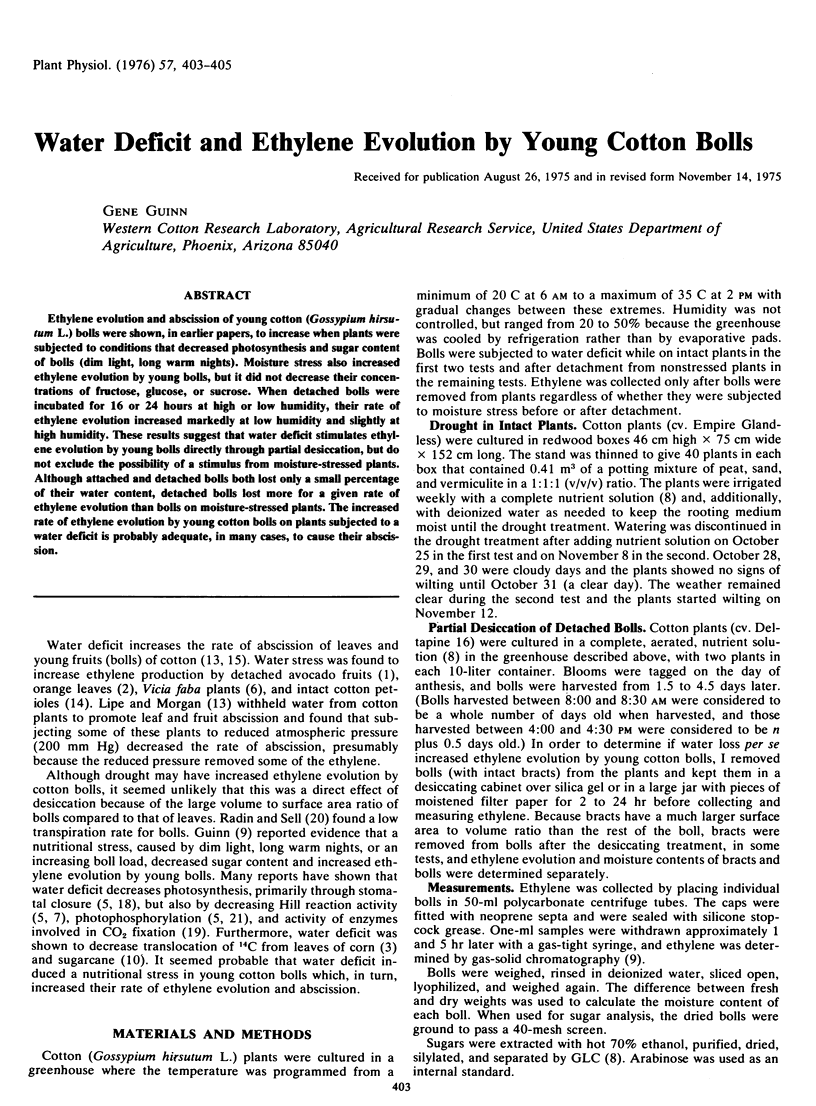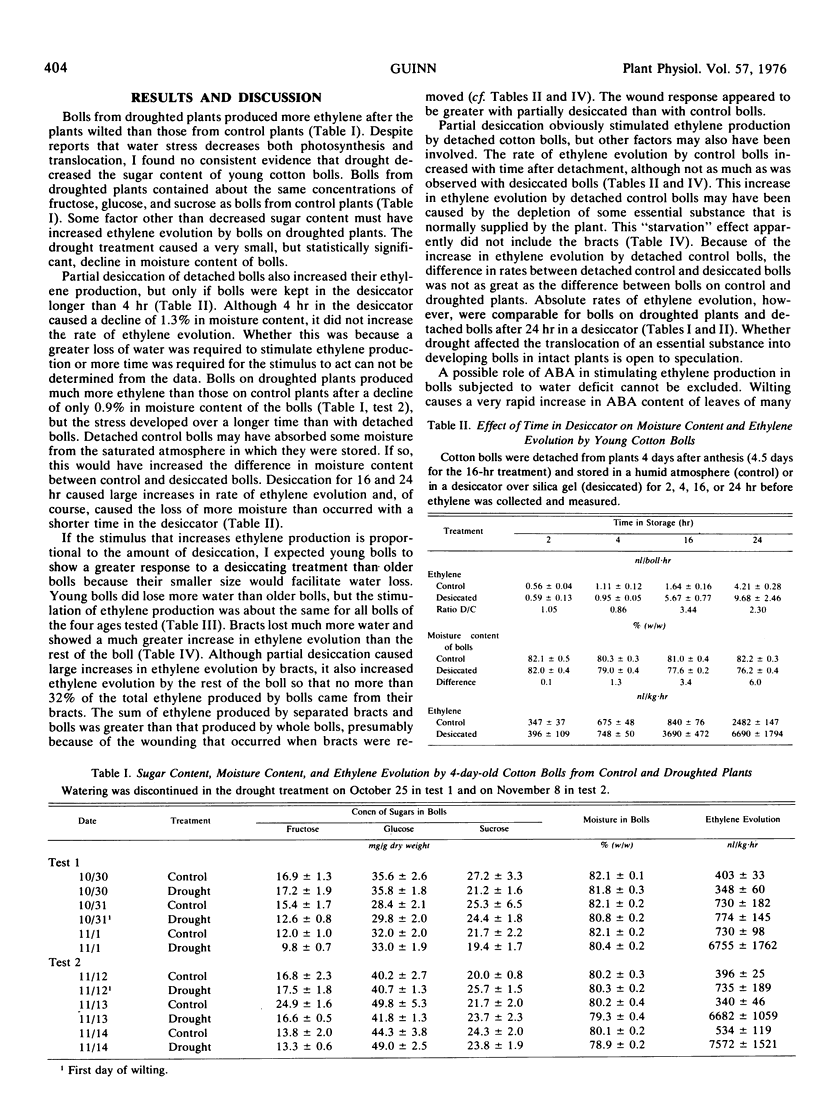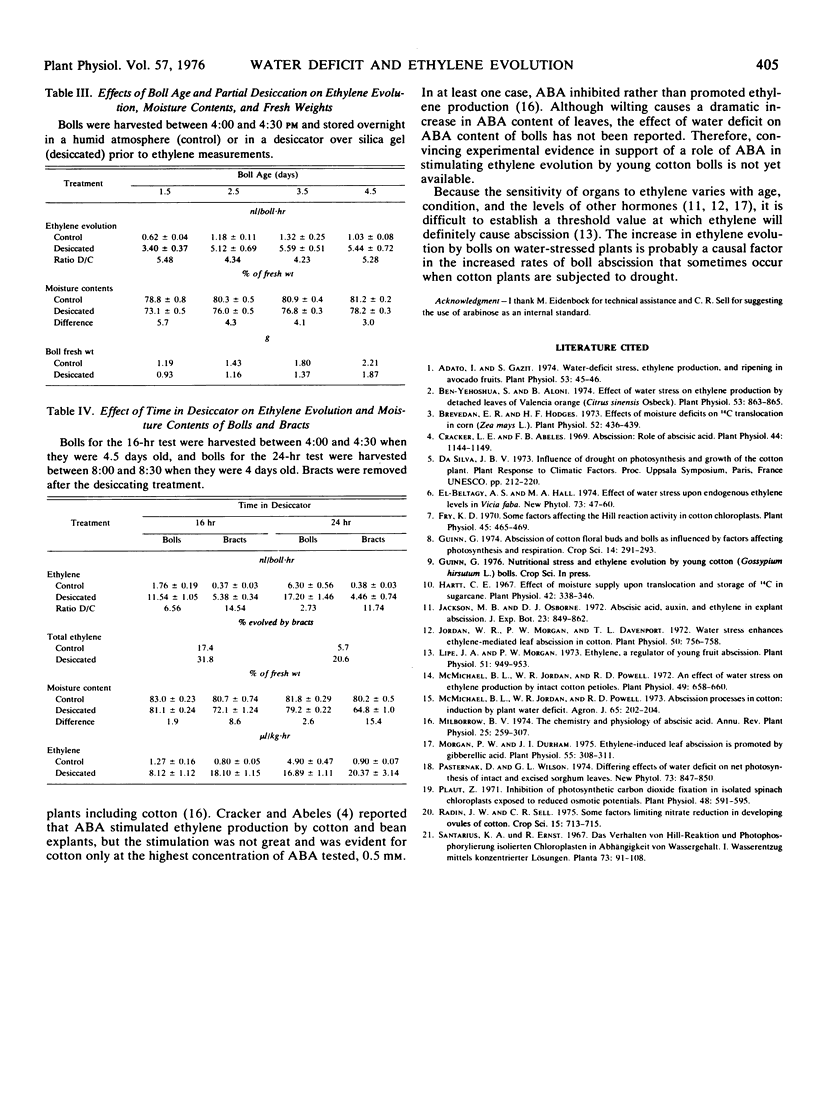Abstract
Ethylene evolution and abscission of young cotton (Gossypium hirsutum L.) bolls were shown, in earlier papers, to increase when plants were subjected to conditions that decreased photosynthesis and sugar content of bolls (dim light, long warm nights). Moisture stress also increased ethylene evolution by young bolls, but it did not decrease their concentrations of fructose, glucose, or sucrose. When detached bolls were incubated for 16 or 24 hours at high or low humidity, their rate of ethylene evolution increased markedly at low humidity and slightly at high humidity. These results suggest that water deficit stimulates ethylene evolution by young bolls directly through partial desiccation, but do not exclude the possibility of a stimulus from moisture-stressed plants. Although attached and detached bolls both lost only a small percentage of their water content, detached bolls lost more for a given rate of ethylene evolution than bolls on moisture-stressed plants. The increased rate of ethylene evolution by young cotton bolls on plants subjected to a water deficit is probably adequate, in many cases, to cause their abscission.
Full text
PDF


Selected References
These references are in PubMed. This may not be the complete list of references from this article.
- Adato I., Gazit S. Water-deficit Stress, Ethylene Production, and Ripening in Avocado Fruits. Plant Physiol. 1974 Jan;53(1):45–46. doi: 10.1104/pp.53.1.45. [DOI] [PMC free article] [PubMed] [Google Scholar]
- Ben-Yehoshua S., Aloni B. Effect of Water Stress on Ethylene Production by Detached Leaves of Valencia Orange (Citrus sinensis Osbeck). Plant Physiol. 1974 Jun;53(6):863–865. doi: 10.1104/pp.53.6.863. [DOI] [PMC free article] [PubMed] [Google Scholar]
- Brevedan E. R., Hodges H. F. Effects of Moisture Deficits on C Translocation in Corn (Zea mays L.). Plant Physiol. 1973 Nov;52(5):436–439. doi: 10.1104/pp.52.5.436. [DOI] [PMC free article] [PubMed] [Google Scholar]
- Cracker L. E., Abeles F. B. Abscission: role of abscisic Acid. Plant Physiol. 1969 Aug;44(8):1144–1149. doi: 10.1104/pp.44.8.1144. [DOI] [PMC free article] [PubMed] [Google Scholar]
- Hartt C. E. Effect of Moisture Supply upon Translocation and Storage of C in Sugarcane. Plant Physiol. 1967 Mar;42(3):338–346. doi: 10.1104/pp.42.3.338. [DOI] [PMC free article] [PubMed] [Google Scholar]
- Jordan W. R., Morgan P. W., Davenport T. L. Water Stress Enhances Ethylene-mediated Leaf Abscission in Cotton. Plant Physiol. 1972 Dec;50(6):756–758. doi: 10.1104/pp.50.6.756. [DOI] [PMC free article] [PubMed] [Google Scholar]
- Lipe J. A., Morgan P. W. Ethylene, a regulator of young fruit abscission. Plant Physiol. 1973 May;51(5):949–953. doi: 10.1104/pp.51.5.949. [DOI] [PMC free article] [PubMed] [Google Scholar]
- McMichael B. L., Jordan W. R., Powell R. D. An effect of water stress on ethylene production by intact cotton petioles. Plant Physiol. 1972 Apr;49(4):658–660. doi: 10.1104/pp.49.4.658. [DOI] [PMC free article] [PubMed] [Google Scholar]
- Plaut Z. Inhibition of photosynthetic carbon dioxide fixation in isolated spinach chloroplasts exposed to reduced osmotic potentials. Plant Physiol. 1971 Nov;48(5):591–595. doi: 10.1104/pp.48.5.591. [DOI] [PMC free article] [PubMed] [Google Scholar]


